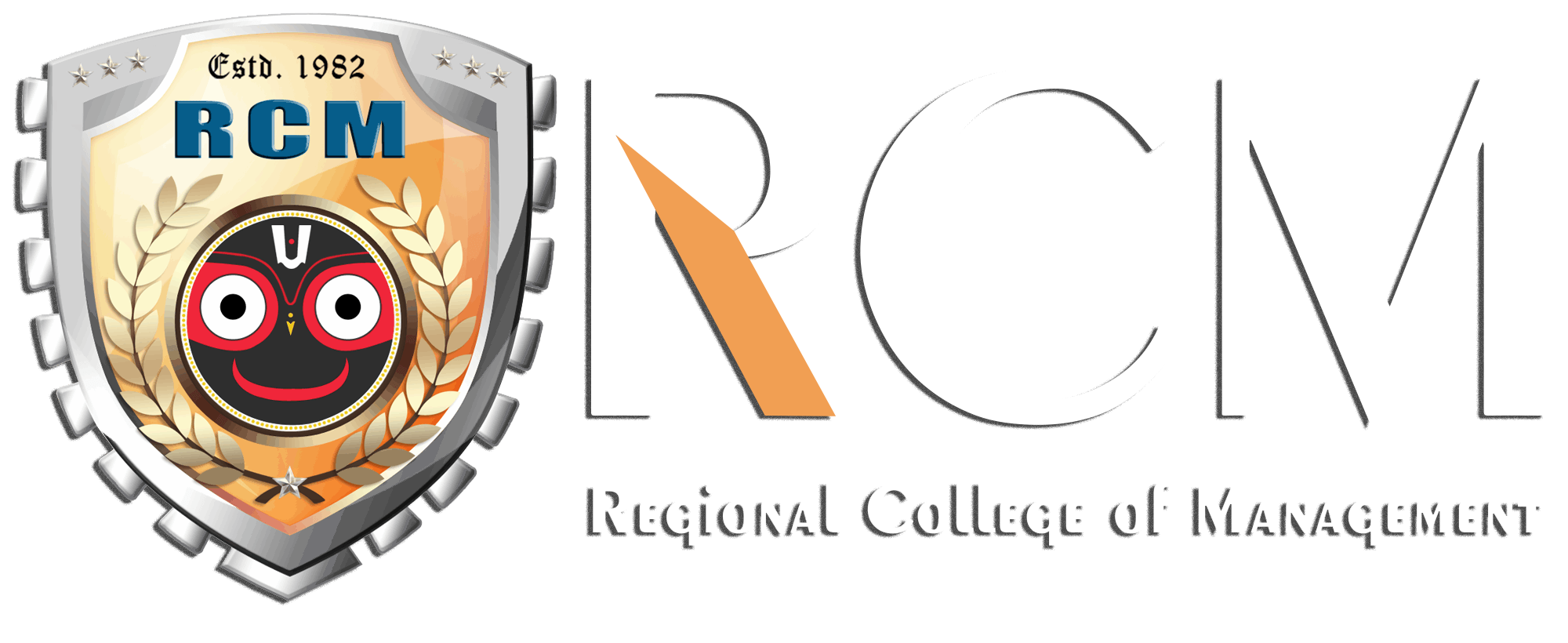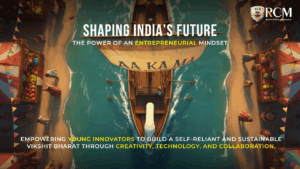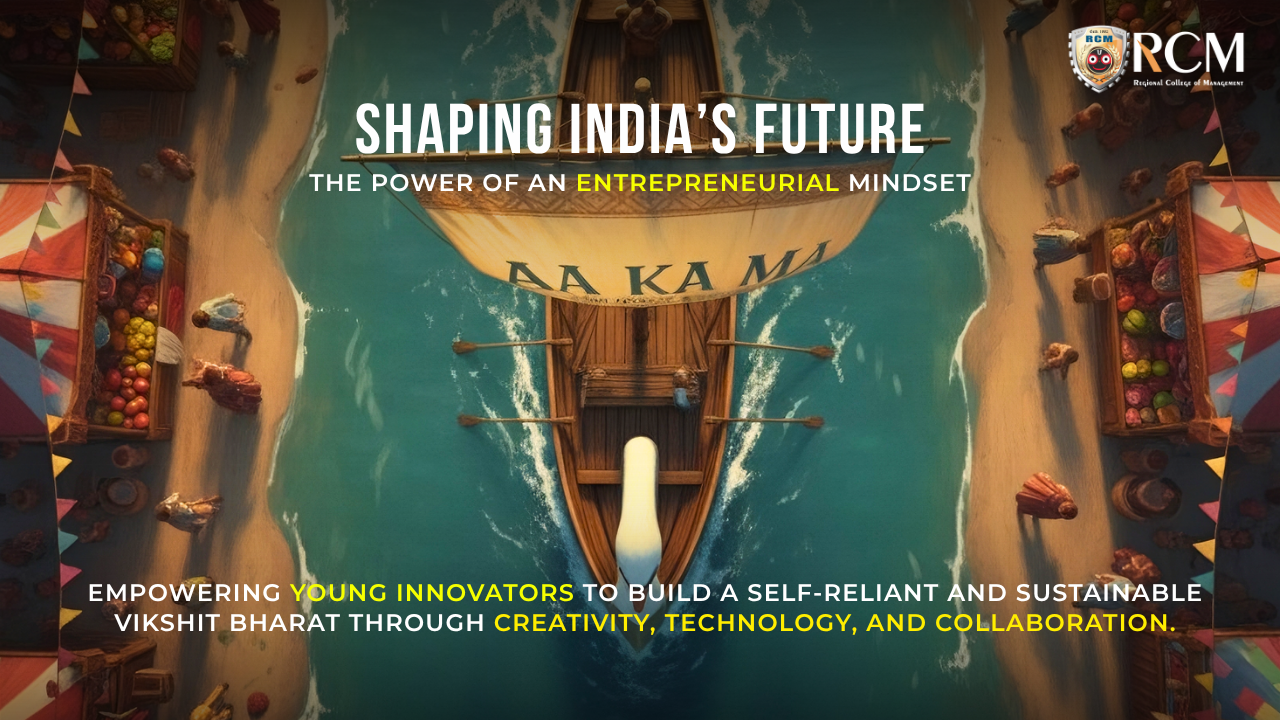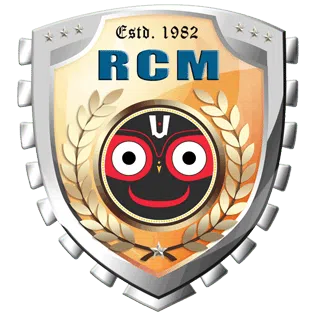Written By: Prof. Pragyan Paramita Das || HOD (HR)
Every corporate has its core function or main target of earning profits. A company, as a separate legal entity, must fulfill social obligations through CSR initiatives for societal welfare. A portion of its resources is allocated to initiatives that positively impact communities and society.
Corporate Social Responsibility (CSR) is a form of social obligation of a Company towards society at large. Corporations take a lot from society in the form of resources for carrying out their functions and earning profits, hence they should also be able to return to society some of the benefits they reaped.
The World Business Council for Sustainable Development explains CSR as A continuing commitment by businesses to behave ethically and contribute to economic development while improving the quality of life of the workforce and their families as well as of the local community and society at large.
Indian Scenario:
Companies in India have been proactive in taking up CSR initiatives and integrating them into their business processes. A number of Companies are actively engaging themselves in more and more CSR activities. The introduction of voluntary guidelines by the Ministry of Corporate Affairs on CSR is also an indication of the growing importance of CSR in the business environment these days. Further, the Companies Bill also contains provisions with respect to CSR. Therefore, CSR which is considered voluntary on the part of Corporate will soon acquire statutory colors with the coming into effect of the Companies Bill, 2011.
CSR and Companies Bill, 2011
Some of the provisions under the Companies Bill, 2011 incorporating clauses relating to CSR are as follows:
Constitution of CSR committee
- As per the Companies Bill, 2011, every company having a net worth of rupees five hundred crores or more, or a turnover of rupees one thousand crores or more, or a net profit of rupees five crores or more during any financial year shall constitute a Corporate Social Responsibility Committee of the Board consisting of three or more directors, out of which at least one director shall be an independent director.
- Formulate and recommend to the Board, a Corporate Social Responsibility Policy which shall indicate the activities to be undertaken by the company as specified in Schedule VII.
- Recommend the amount of expenditure to be incurred on the activities referred to in clause (a); and monitor the Corporate Social Responsibility Policy of the company from time to time.
Every company should spend, in every financial year, at least two percent of the average net profits of the company made during the three immediately preceding financial years, in pursuance of its Corporate Social Responsibility Policy.
CSR: A Necessity for Developing Countries
For a developing country like India, investment by corporates in CSR activities is a requisite. India is faced with problems like poverty, illiteracy, lack of healthcare, etc. These challenges are still ubiquitous and the government has limited resources to tackle these challenges.
Growing Corporate Responsibility Towards Society
More and more companies are realizing their responsibility towards the community and doing their part for society through donations and charity events. In fact, CSR nowadays has gone beyond mere charity and donations and is approached in a more organized fashion. It has become one of the strategic tools of the companies. Companies form CSR teams, specially dedicated to formulating policies, strategies, and goals for their CSR programs and setting aside budgets to support them.
Corporate-NGO Partnerships for Effective CSR
Corporations are also executing many CSR initiatives in partnership with Non-Governmental organizations (NGOs), thereby taking advantage of the experience and expertise of such NGOs in tackling specific social problems. Now, CSR in India has set a realistic agenda of grassroots development through alliances and partnerships with sustainable development approaches. At the heart of the solution lies the intrinsic coming together of all stakeholders in shaping up a distinct route for an equitable and just social order.
A Glance at The Development of Corporate Social Responsibility in India
The Four Phases of CSR Development in India:
The history of Corporate Social Responsibility in India has its four phases which run parallel to India’s historical development and has resulted in different approaches toward CSR. However, the phases are not static and the features of each phase may overlap other phases.
1. The First Phase:
In the first phase charity and philanthropy were the main drivers of CSR. Culture, religion, family values and tradition, and industrialization had an influential effect on CSR. In the pre-industrialization period, which lasted till 1850, wealthy merchants shared a part of their wealth with the wider society by way of setting up temples for religious causes. Moreover, these merchants helped the society in getting over phases of famine and epidemics by providing food from their godowns and money and thus securing an integral position in the society.
With the arrival of colonial rule in India from the 1850s onwards, the approach towards CSR changed.The industrial families of the 19th century, such as Tata, Godrej, Bajaj, Modi, Birla, and Singhania, prioritized both economic and social development. However, their efforts were influenced not only by selfless and religious motives but also by caste groups and political objectives.
2. The Second Phase:
In the second phase, during the independence movement, there was increased stress on Indian Industrialists to demonstrate their dedication toward the progress of the society. This was when Mahatma Gandhi introduced the notion of “trusteeship”, according to which the industry leaders had to manage their wealth so as to benefit the common man. “I desire to end capitalism almost, if not quite, as much as the most advanced socialist. But our methods differ. My theory of trusteeship is no make-shift, certainly no camouflage. I am confident that it will survive all other theories.” This was Gandhi’s words that highlight his argument for his concept of “trusteeship”.
Gandhi’s influence put pressure on various industrialists to act towards building the nation and its socioeconomic development. According to Gandhi, Indian companies were supposed to be the “temples of modern India.” Under his influence, businesses established trusts for schools and colleges and also helped in setting up training and scientific institutions. The operations of these trusts were largely in line with Gandhi’s reforms, which sought to abolish untouchability, encourage the empowerment of women, and promote development in rural areas, ensuring inclusive growth across the country.
3. The Third Phase:
The third phase of CSR (1960–80) had its relation to the element of a “mixed economy,” the emergence of Public Sector Undertakings (PSUs), and laws relating to labor and environmental sustainability standards. During this period, the private sector was forced to take a backseat. The government considered the public sector the prime mover of development due to stringent legal rules restricting private sector activities.” The policy of industrial licensing, high taxes, and restrictions on the private sector led to corporate malpractice. This, in turn, led to the enactment of legislation regarding corporate governance, labor rights, and environmental sustainability to ensure responsible business practices.
PSUs were set up by the state to ensure the suitable distribution of resources (wealth, food, etc.) to the needy. However, the public sector was effective only to a certain limited extent. This led to a shift of expectation from the public to the private sector and their active involvement in the socio-economic development of the country became absolutely necessaryIn 1965 Indian academicians, politicians, and businessmen set up a national workshop on CSR aimed at reconciliation. They emphasized transparency, social accountability, and regular stakeholder dialogues. In spite of such attempts, the CSR failed to catch steam.
4. The Fourth Phase:
In the fourth phase (1980 until the present) Indian companies started abandoning their traditional engagement with CSR and integrated it into a sustainable business strategy.In the 1990s, the government initiated globalization and economic liberalization, partially removing controls and licensing systems, boosting the economy The increased growth momentum of the economy helped Indian companies grow rapidly and this made them more willing and able to contribute towards social causes.
Globalization has transformed India into an important destination in terms of production and manufacturing bases for TNCs are concerned. As Western markets are becoming more and more concerned about labour and environmental standards in developing countries, Indian companies that export and produce goods for the developed world need to pay close attention to compliance with international standards.
Current State of Corporate Social Responsibilities in India: (Some Examples of Corporates)
Corporates like the Tata Group, the Aditya Birla Group, and Indian Oil Corporation have been involved in serving the community through donations and charity events. Many other organizations have been doing their part for the society. The basic objective of CSR these days is to maximize the company’s overall impact on society and stakeholders.
An increasing number of companies are integrating Corporate Social Responsibility in India into their business operations and processes. A growing number of corporates feel that Corporate Social Responsibility in India is not just another form of indirect expense but is important for protecting goodwill and reputation, defending against attacks, and increasing business competitiveness.
Companies have specialized CSR teams that formulate policies, strategies, and goals for their CSR programs and set aside budgets to fund them. These programs follow a clear social philosophy with well-defined objectives aligned with the core business. Employees play a crucial role in implementing these initiatives. CSR programs range from community development to development in education, environment, healthcare, etc
Corporate Efforts in Community Development
Corporations such as Bharat Petroleum Corporation Limited, Maruti Suzuki India Limited, and Hindustan Unilever Limited are involved in the Provision of improved medical and sanitation facilities, building schools and houses, and empowering the villagers and in the process making them more self-reliant by providing vocational training and knowledge of business operations are the facilities that these corporations focus on. Many companies are helping other people by providing them with a good standard of living.
Healthcare-Focused CSR Initiatives
On the other hand, the CSR programs of corporations like GlaxoSmithKline Pharmaceuticals focus on the health aspect of the community. They set up health camps in tribal villages that offer medical check-ups and treatment and undertake health awareness programs. Some of the non-profit organizations which carry out health and education programs in backward areas are to a certain extent funded by such corporations.
Also, Corporates increasingly join hands with Non-governmental organizations (NGOs) and use their expertise in devising programs that address wider social problems.
SAP India, in partnership with Hope Foundation, is actively working to rebuild the lives of Tsunami-affected victims. Hope Foundation, an NGO dedicated to improving the lives of the people with low income and needy, collaborates with SAP India on this initiative. Through this venture, they established the SAP Labs Center of HOPE in Bangalore, which provides food, clothing, shelter, and medical care to street children.
Examples of Corporates Joining Hands With NGOs For CSR:
Bringing Changes in India:
1. Alstom Foundation
(A foundation for the environment)
1. A unique initiative to electrify rural India through the Dry Gasification system:
Alstom Foundation collaborated with Husk Power Systems (HPS) to fund the Dry Gasification process for low-cost manufacturing and retrofitting of the gasifiers at the existing 65 power plant sites of HPS in Bihar.
2. Green Orphanage for Disadvantaged Children inaugurated in Karnataka:
To support the local community and preserve the environment, Alstom Foundation inaugurated an eco-friendly structure in Chamarajnagar, Karnataka using solar heating, solar lighting, fly ash bricks, and natural stones. The Project christened as ‘Green Orphanage’, aims to educate, rehabilitate and socially integrate 40 disadvantaged children by providing them shelter and vocational skills. This project is in sync with Alstom Foundation’s ambition to become a key contributor to sustainable development around the world.
3. The Kumaun Spring Recharge Initiative:
Launched under the aegis of Alstom Foundation, the initiative will recharge 30 springs in the Kumaun region of the Himalayas for a period of over two years by basing it on the principles of hydrogeology.
4. Restoring farming in Gujarat, India:
The Alstom Foundation restores soil in remote areas of Gujarat to boost agricultural productivity. Years of monsoon erosion have damaged the land, and the foundation actively works to reverse this impact.
5. Windmills for salt farmers:
Alstom Foundation also proposes to erect 50 windmills over a period of one year in an effort to help farmers switch from fossil fuel to renewable sources of energy.
6. Kanya Kelawani Project:
Alstom contributed towards the cause of ‘Kanya Kelawani’ – meaning providing Education to the Girl Child, to ensure girl child education in Gujarat. It was done on the occasion of dedicating the first GT26 based combined cycle power plant project to the Nation.
7. Education Initiatives:
As a part of the education initiative, Alstom facilities in Durgapur and Shahabad have constructed a school building and provided it with the infrastructure along with financial assistance for the children residing in those areas.
8. Aviva Street to School Programme & Great Wall of Education
Aviva Life Insurance supports the Street to School program, which helps integrate out-of-school street children into mainstream education. The company also backs Mobile Learning Centers in Delhi and West Bengal, ensuring access to education for underprivileged children. In 2010, Aviva initiated a Book Donation Drive across the Delhi & NCR region, promoting literacy and learning among young minds. In 2011, the book will expand its footprints to 3 more cities & managed to collect around 9,50,000 books to help thousands of underprivileged children supported by the Save The Children drive.
Some Features of the Program:
Aviva Street to School:
- India has the largest number of street children in the world, with Delhi and Kolkata being home to most of these children.
- Their life on the streets without parental care or adult supervision makes them highly vulnerable to abuse and exploitation.
- Many street children work in wayside eateries, pick rags, and beg. Employers and buyers exploit them by paying extremely low wages. Police and passers-by mentally torture and physically harass them. Adults and peers subject them to sexual violence.
Street To School:
To provide a better chance at childhood to these children, Save the Children and Aviva Life Insurance are together running the Street to School program in Delhi and Kolkata.
With this program, they are providing street children with a safe and sustainable route out of work and into school.
Under the project:
- They established nine educational centers in Delhi and offer education, food, recreation, medical care, and counseling in Kolkata.
- They provide education for one year before mainstreaming them into nearby Government schools.
- They are improving attitudes and increasing awareness amongst the trade unions and shop keepers towards street children.
- They are also working to increase sensitivity being demonstrated by the police and positive recognition of the initiative by government officials.
1. Mothercare “Born to Care” Campaign:
Mothercare group has formed a 3-year partnership with Save The Children, with a promise to donate 1.75 million GB pound to the underprivileged children through a co-branded fund raising campaign called Born to Care. Mother Care is also hosting various campaigns to save the new born lives with proper nutritions.
2. P&G Shiksha:
P&G is supporting Save the Children to empower marginalized girls with quality education in 12 Kasturba Gandhi Balika Vidyalayas (KGBVs) across Rajasthan and Jharkhand. They are reaching 900 girls attending KGBVs, 600 out-of-school children, 150 teachers, 300 school management members, and 3,000 community members. Their goal is to create a world where every child has the right to survival, protection, and proper childhood development. Through partnerships with corporates and organizations, they are driving meaningful change in education.
Problems in Implementing CSR in India
Despite successful examples, CSR in India remains underdeveloped and poorly understood. Few public companies follow it out of necessity, while some private firms adopt it due to global practices. However, most prioritize compliance over real social impact. Challenges like lack of understanding, trained personnel, and authentic data limit its effectiveness. However, CSR is evolving from a social obligation to a business necessity, as companies recognize that benefiting workers and communities also strengthens their business.
For a developing country like India, investment by corporates in CSR activities is a requisite. India is faced with problems like poverty, illiteracy, lack of healthcare etc. These challenges are still ubiquitous and the government has limited resources to tackle these challenges.
More and more companies are realizing their responsibility towards the community and doing their part for the society through donations and charity events. In fact, companies now approach CSR in a more organized manner, going beyond mere charity and donations. It has become one of the strategic tools of the companies. Companies form CSR teams, especially dedicated to formulating policies, strategies and goals for their CSR programs and set aside budgets to support them.
Conclusion:
Engaging in various CSR activities is a win-win situation for both corporate and society. Corporates can save a lot in front of taxation and also contribute in upliftment of society by indulging in such CSR activities.
CSR in India has evolved from responsive activities to sustainable initiatives, becoming an integral part of corporate practices.
Today, corporate groups allocate part of their profit to society through medical camps and educational scholarships.This contributes to community development and enhances the company’s reputation. CSR initiatives build employee loyalty and trust in the organization’s ethics over time.
It improves a company’s operational efficiency and often enhances quality and productivity. CSR in India is still developing, benefiting society and businesses. We have taken a leap forward in CSR initiatives across India. However, many milestones remain to be achieved in this journey.





























